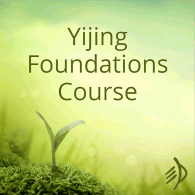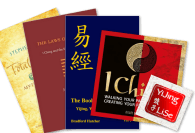I’ve been writing a lot lately about seeing readings with fresh eyes, engaging with the imagery directly, as if for the first time. Here’s a post about the other side of that coin – about the joy of being familiar with Yi, so that readings are like chatting with an old friend.
Joys of familiarity
Naturally, familiarity with Yi tends to make readings quicker and easier. Advice for an awkward meeting? Hexagram 62: take care, stay small, fly low. How about this bright idea I just had? 43.1.4 to 48: slow down, think about your workload and your resources… . Of course there’s plenty more to learn from those readings, but this kind of quick, simple insight is a good place to start.
Familiarity also makes it easier to spot the connections between readings, and appreciate the nuances as Yi develops an idea, or lays out a contrast, from one reading to the next. There’s a natural flow to the conversation.
And I’ve found it makes it much easier to see the connections inside a reading – to get an overview of the relationship between the two hexagrams. I like to start each reading by asking myself about this connection: ‘If there were a 48-ish aspect to 43, what could it be?’ (Hmm… as you show up and ‘bring the message’ in 43, maybe it asks the question about what you have to give?) Intuiting the answer to that kind of question depends on being able to bring to mind the ‘personality’ of a hexagram, and that’s an awareness that builds over time; I certainly didn’t have it twenty years ago.
How do you build familiarity?
Through readings, of course – what else?
Readings will give you unique, personal associations with hexagrams – maybe with one that repeats in your answers again and again until you finally get the message, or one that Yi consistently uses to point to the same thing. This can become a sort of personal shorthand you share with the oracle: ‘Hello, you’re doing that thing again’ or ‘Look over here!’
Do ask about all areas of your life, and don’t hesitate to ask about experiences you do understand – ‘What can I learn from that?’ Light-hearted questions, questions about fictional characters… it’ll all add to your sense of a hexagram.
It also helps to pay attention to the hexagram structure – that provides the framework for your understanding, so it’s not like trying to memorise 64 random flashcards. How does the energy of the lines and trigrams feel, how does it move? (43, for instance, seems to surge up like a geyser.) Where does the hexagram come from in the Sequence – what story could this be telling? What’s the other side of the coin, its pair? Its complement? The nuclear hexagram?
If you make time to look at these aspects of your readings, not only does the reading itself have more of a chance to sink in, but you get a deeper sense of hexagram ‘personality’. That’s the kind of personal familiarity with Yi that makes for easier, more fluent conversations in future.









